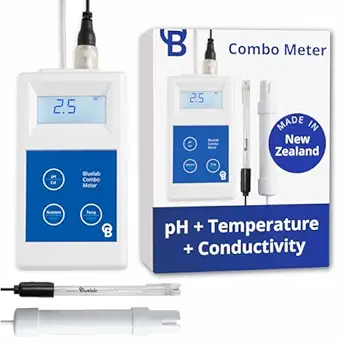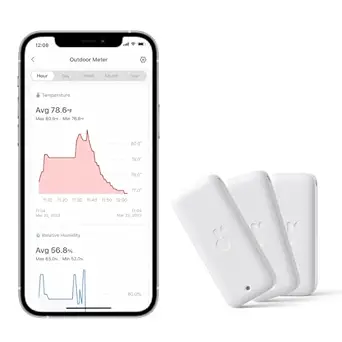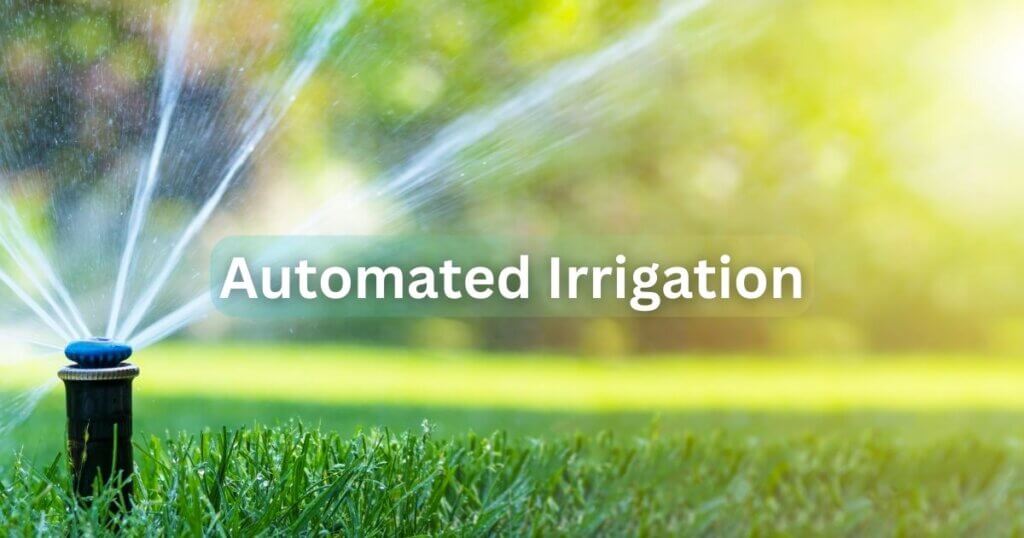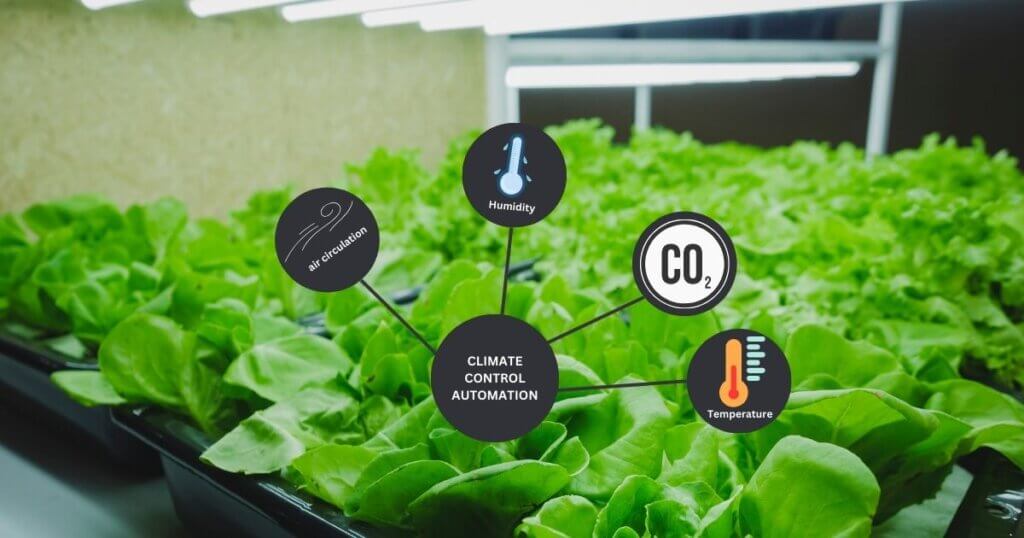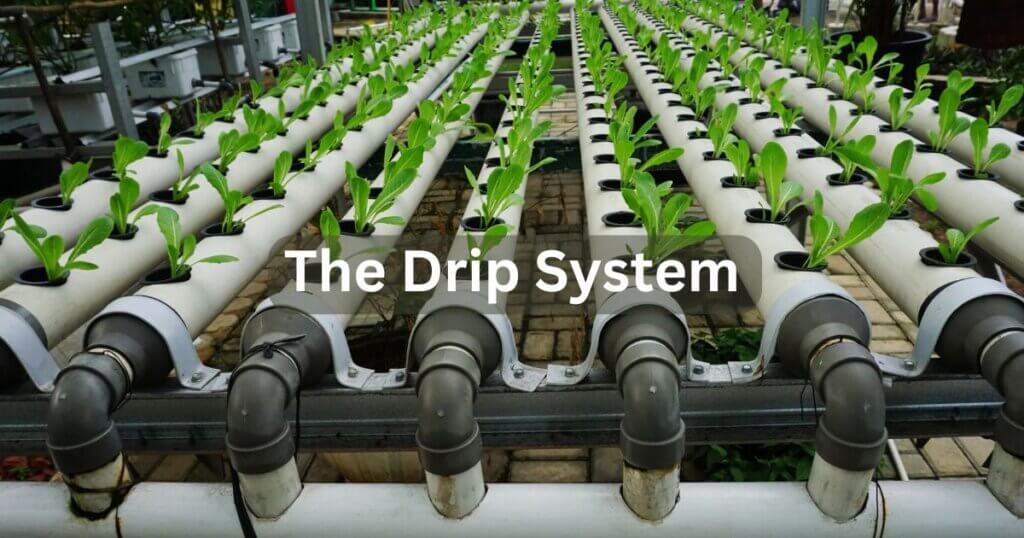IoT Sensors Indoor Farming Boost Yields Like Never Before
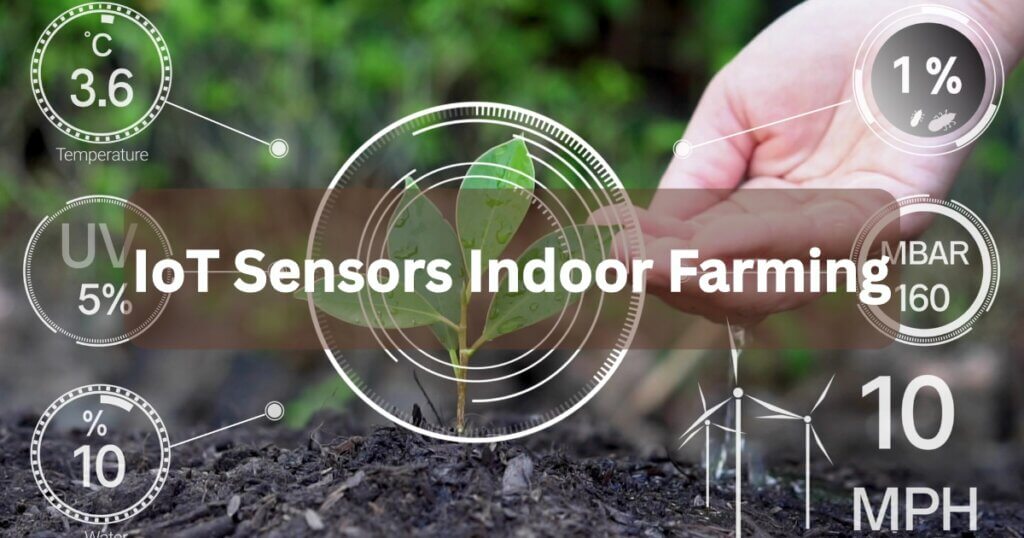
Some of the links in this post are affiliate links. As an Amazon Associate, we earn a referral fee from qualifying purchases—at no extra cost to you.
In a world where every square foot of space counts, indoor farming is blooming like never before. And at the heart of this revolution? IoT sensors. These tiny, powerful devices are doing for farming what smartphones did for communication — transforming the game.
If you’re looking to make your indoor farm smarter, more efficient, and wildly productive, this guide is for you. Let’s explore how IoT sensors in indoor farming are unlocking unbelievable growth potential for growers everywhere.
Table of Contents
What Are IoT Sensors and Why They Matter in Indoor Farming
Think of IoT (Internet of Things) sensors as the eyes, ears, and nerves of your farm. These devices collect data like temperature, humidity, light, pH, and nutrient levels, and send it to your phone or computer in real time. In traditional farming, you needed years of experience (and a lot of guesswork) to get things right. But with IoT sensors in indoor farming, you get instant insights, data-backed decisions, and a system that adapts to your plants’ needs automatically. It’s precision farming, simplified.
The Incredible Role of IoT Sensors in Indoor Farming
Real-Time Monitoring for Precision Growing
Wouldn’t it be nice if your plants could tell you exactly what they need? That’s exactly what IoT sensors make possible. Whether it’s detecting a 2-degree temperature drop or rising CO₂ levels, these sensors alert you immediately so you can respond fast. That kind of responsiveness leads to healthier plants, fewer losses, and faster harvests.
Automated Climate Control Using Smart Sensors
Forget adjusting fans, lights, or vents manually. When linked to your HVAC system or grow lights, IoT sensors automate climate control. They adjust humidity, temperature, and airflow to maintain optimal growing conditions — 24/7. It’s like having a personal climate concierge for your crops.
To automate heating or cooling, the Inkbird ITC-308 Temperature Controller is a reliable tool. It works with heaters or fans to maintain optimal conditions without manual adjustments. View on Amazon.
Irrigation Efficiency and Water Conservation
Overwatering and underwatering are silent killers in indoor farming, often going unnoticed until plants show stress. IoT moisture sensors take the guesswork out by delivering precise data, helping you water only when necessary. This not only prevents root rot and nutrient imbalances but also conserves water. The result is healthier plants, lower utility costs, and a more sustainable growing system.
How IoT Sensors Drive Data-Backed Decisions in Indoor Agriculture
Big Data Meets Smart Farming
Your sensors don’t just gather data. They create a real-time data ecosystem. When analyzed, this data reveals patterns — like which crop grows best under certain lighting, or when pests tend to appear. That’s pure gold for farmers. It takes the guesswork out of growing and replaces it with predictive intelligence.
AI and Machine Learning in Indoor Farming Networks
Here’s where it gets really exciting. Pair IoT sensors with AI, and you have a self-optimizing farm. Machine learning algorithms analyze sensor data and tweak settings automatically — learning what your plants need better than you do. The future is now, and it’s artificially intelligent.
Top Types of IoT Sensors Used in Indoor Farming
Temperature and Humidity Sensors
The basics matter. If temps get too hot or air too dry, your plants suffer. These sensors constantly measure and send alerts if things go out of range.
Light Intensity and CO₂ Sensors
Are your plants getting enough light? Too much? Light sensors make sure they get the perfect dose. CO₂ sensors ensure there’s enough carbon dioxide for optimal photosynthesis.
Soil and Hydroponic Nutrient Sensors
Whether you’re growing in soil or water, nutrient balance is key. These sensors track pH levels, EC (electrical conductivity), and nutrient concentrations in real time.
For accurate nutrient monitoring, the Bluelab Combo Meter is a trusted choice among growers. It reads pH, EC, and temperature — all critical metrics for healthy root development.
Motion and Security Sensors for Farm Safety
Indoor farms are packed with high-value equipment and crops. Motion detectors and door sensors help you secure your operation and monitor employee access.
Real-World Use Cases of IoT Sensors in Indoor Farming
Vertical Farms and Hydroponic Setups
Vertical farms are a prime example of IoT done right. With stacked layers and minimal space, precision is key. IoT sensors manage microclimates on every level. In hydroponics, where water quality is everything, sensors track dissolved oxygen, pH, and nutrients, creating an environment where roots thrive.
Urban Greenhouses Powered by IoT
City growers are transforming rooftops and abandoned buildings into thriving farms using IoT sensors. These smart tools provide real-time data on light, moisture, and temperature, allowing precise control over growing conditions. Remote access means crops can be managed from anywhere, reducing labor and increasing efficiency. It’s high-tech farming that turns underused urban space into green goldmines.
Remote Monitoring for Small-Scale Home Growers
Even if you’re simply growing lettuce in your kitchen, IoT technology makes caring for your plants easier than ever. DIY sensor kits allow you to monitor plant health, temperature, and watering schedules right from your smartphone. This real-time data helps you respond quickly to your plants’ needs. With smart tools, even small indoor gardens can thrive effortlessly.
The SwitchBot Wi-Fi Thermometer Hygrometer is a smart and affordable option for small growers. It connects to your smartphone for remote monitoring and even supports voice assistants. See it on Amazon.
Benefits of Integrating IoT Sensors in Indoor Farming
Higher Crop Yields with Lower Input
Having access to precise data means you can make better decisions for your crops. IoT sensors monitor conditions like moisture, light, and temperature, allowing you to optimize growing environments efficiently. This leads to maximizing plant growth while minimizing resource waste such as water and nutrients. The result is higher yields using fewer inputs, boosting both productivity and sustainability.
Energy Efficiency and Sustainability
IoT sensors work hand-in-hand with timers and controllers to ensure grow lights and equipment run only when necessary. By avoiding excessive energy use, you save on electricity bills and reduce your environmental footprint. This targeted approach not only cuts costs but supports greener farming practices. It’s a win-win for your budget and the planet.
Reduced Labor Costs and Human Error
Automating routine tasks like irrigation, lighting, and environmental monitoring with IoT sensors reduces the need for constant human intervention. Unlike people, sensors don’t tire or make mistakes, ensuring consistent care for your crops. This automation frees up your time and minimizes risks related to human oversight. Ultimately, it lowers labor costs while improving crop reliability and quality.
How to Get Started with IoT Sensors for Indoor Farming
Affordable IoT Sensor Kits for Beginners
New to this world? No problem. Brands like Arduino, Seeed Studio, and OpenAg offer plug-and-play sensor kits tailored for indoor farms. They’re easy to set up, budget-friendly, and fully customizable.
One great entry-level option is the Seeed Studio Grove Beginner Kit for Arduino, which includes multiple plug-and-play sensors perfect for monitoring conditions in indoor farms. It’s affordable, customizable, and ideal for DIY growers just getting started. Check it out on Amazon.
Choosing the Right IoT Platform
Look for platforms that support multiple sensor types and provide a mobile-friendly dashboard. FarmOS, SmartFarm, and KaaIoT are top picks for flexibility and scalability.
Setting Up Alerts and Analytics Dashboards
Configure your system to send push notifications or email alerts if conditions fall out of range. Dashboards let you monitor everything in one place — even when you’re on vacation.
The Future of IoT Sensors in Smart Indoor Farming
Edge Computing and Real-Time Action
Edge computing lets sensors analyze data right where it’s collected, instead of relying on cloud servers. This local processing enables instant responses to changing conditions, improving crop health and efficiency. Even if your internet connection fails, your farm can keep making split-second decisions. It’s reliable, fast, and perfect for smart indoor farming.
Blockchain for Traceable Farming
Integrating blockchain with IoT creates a secure, transparent record of every step in your crop’s lifecycle—from seed planting to final sale. This traceability builds customer trust by proving the quality and origin of your produce. It also sets your farm apart in a competitive market. Offering full transparency adds real value to your brand and appeals to conscious consumers.
Conclusion: Why Now is the Best Time to Embrace IoT Sensors in Indoor Farming
If you’re serious about growing more with less, IoT sensors in indoor farming are your secret weapon. They take the guesswork out of growing, slash your energy and water bills, and put you in full control — anytime, anywhere. Whether you’re a hobbyist or a commercial grower, the tools are ready. The tech is affordable. And the benefits are too good to ignore.
Welcome to the smart farming revolution. Don’t just grow — grow smarter.
FAQs – IoT Sensors Indoor Farming
1. How do IoT sensors handle connectivity issues in indoor farms located in areas with poor internet?
Many IoT sensor systems use local edge computing, which allows data processing directly on-site without needing constant internet access. This means the sensors can continue to monitor and control farm conditions even during internet outages. Data can be synced to the cloud once the connection is restored.
2. What are the cybersecurity risks associated with using IoT sensors in indoor farming, and how can they be mitigated?
IoT devices can be vulnerable to hacking or unauthorized access, potentially compromising farm data or control systems. Mitigation strategies include using strong passwords, regularly updating firmware, implementing network encryption, and isolating IoT devices on separate secure networks.
3. Can IoT sensor systems integrate with existing farm management software or equipment?
Yes, many modern IoT platforms offer API integrations that allow them to connect with popular farm management software and smart devices. This enables seamless data sharing and coordinated automation across different systems for more efficient farm management.
4. How often do IoT sensors require maintenance or calibration to ensure accurate readings?
Maintenance frequency varies by sensor type and usage, but generally, routine calibration is recommended every 3 to 6 months to maintain accuracy. Sensors should also be inspected regularly for physical damage or dust buildup that could affect performance.
5. Are there any environmental concerns regarding the disposal or energy consumption of IoT sensor devices?
While IoT sensors typically consume low amounts of energy, large-scale deployments can add up. It’s important to use energy-efficient models and consider renewable power sources when possible. For disposal, sensors contain electronic components that should be recycled properly to avoid environmental harm, following e-waste guidelines.
Other Useful Resources Related To IoT Sensors Indoor Farming
- Transforming Indoor Farming: The Power of IoT Agriculture Sensors
Discover how IoT sensors are revolutionizing indoor farming by providing real-time data on environmental conditions to optimize crop yields and resource usage. This article explains the key benefits and sensor types used in smart agriculture.
🔗 Read more - IoT-enabled Smart Agriculture for Improving Water Management (ScienceDirect)
This research paper explores how IoT technology improves water management in agriculture, leading to efficient irrigation and sustainable indoor farming practices. It covers sensor deployment and data analytics applications.
🔗 Read more - Empowering Vertical Farming through IoT and AI-Driven Technologies (ScienceDirect)
Learn about the integration of IoT sensors and AI to create automated, data-driven vertical farms that optimize growing conditions, improve plant health, and increase productivity with minimal manual intervention.
🔗 Read more - IoT Agriculture Sensors for Controlled Environment Farming (Amphenol Sensors Blog)
This blog post provides an overview of sensor technologies for controlled environment agriculture, highlighting how IoT devices monitor temperature, humidity, light, and nutrient levels to maintain optimal growth conditions.
🔗 Read more - IoT Education Kits & Courses by RAKwireless
For those starting out with IoT sensor technology in farming, this resource offers affordable, easy-to-use IoT kits and tutorials designed to help beginners build and monitor smart farming systems.
🔗 Read more

